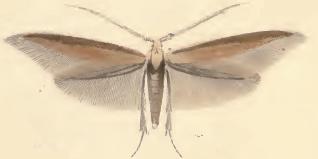
Marrubium is a genus of flowering plants in the family Lamiaceae, native to temperate regions of Europe, North Africa, and Asia as far east as the Xinjiang region of western China. A few species are also naturalized in North and South America.

Stachys is a genus of plants, one of the largest in the mint family Lamiaceae. Estimates of the number of species vary from about 300, to about 450. Stachys is in the subfamily Lamioideae and its type species is Stachys sylvatica. The precise extent of the genus and its relationship to other genera in the subfamily are poorly known.

Ballota (horehound) is a genus of flowering evergreen perennial plants and subshrubs in the family Lamiaceae. native to temperate regions. The Mediterranean region has the highest diversity in the genus, with more isolated locations in South Africa, Central Asia, northern Europe, and the islands of the eastern North Atlantic. It is found in rocky and waste ground.

Anania hortulata, also known as the small magpie, is a species of moth of the family Crambidae found in Asia Europe and North America. It was described, in 1758, by the 18th-century Swedish taxonomist, botanist, and zoologist, Carl Linnaeus.

Coleophora serratella is a moth of the family Coleophoridae. It is found in Europe, Japan (Hokkaido) and North America.

Batrachedra praeangusta is a moth of the family Batrachedridae which is native to Europe. It is also found in North America. It was first described by Adrian Haworth in 1828 from the type specimen found in England. The foodplants of the larvae are poplars and willows.

Wheeleria spilodactylus is a moth of the family Pterophoridae, first described by John Curtis in 1827. It is found in South-Western and Central Europe and the Mediterranean, Asia Minor and North Africa. It has been introduced to Australia as a biocontrol agent for white horehound.

Amblyptilia punctidactyla, also known as the brindled plume, is a moth of the family Pterophoridae found across the Palearctic. The species was first described by the English entomologist, Adrian Hardy Haworth in 1811.

Coleophora albitarsella is a moth of the family Coleophoridae. It is found in most of Europe, but has not been recorded from Ireland and Greece.

Coleophora wockeella is a moth of the family Coleophoridae. It is found from Latvia to the Iberian Peninsula, Italy and Albania and from Great Britain to southern Russia.

Coleophora virgatella is a moth of the family Coleophoridae. It is found from Germany and Poland to the Pyrenees, Italy and Greece. It has also been recorded from southern Russia and central Asia.

Coleophora auricella is a moth of the family Coleophoridae. It is found from Germany and Poland to Spain, Italy and Romania. It has also been recorded from southern Russia.
Coleophora ballotella is a moth of the family Coleophoridae. It is found from Germany, Poland and the Baltic States to the Iberian Peninsula, Italy and Greece. It has also been recorded from northern and southern Russia.

Coleophora glitzella is a moth of the family Coleophoridae. It is found from Fennoscandia and northern Russia to Italy and from Great Britain to Romania. It was recently reported from Yukon, Canada.

Coleophora ochrea is a moth of the family Coleophoridae found in Europe. It was first described by Adrian Hardy Haworth in 1828.

Coleophora ochripennella is a species of moth from the family Coleophoridae. It is found from Germany and Poland to the Pyrenees, Italy and Greece.
Coleophora onopordiella is a moth of the family Coleophoridae. It is found in France and Italy, and from Poland to Greece.

Metriotes lutarea is a moth of the family Coleophoridae. It is found in most of Europe and Turkey.

Coptotriche marginea is a moth of the family Tischeriidae, found in most of Europe. It was named by the English botanist, carcinologist and entomologist, Adrian Hardy Haworth in 1828, from a specimen found in England. The larvae mine the leaves of brambles (Rubus) species.

Endothenia nigricostana, the black-edged marble, is a moth of the family Tortricidae. It was described by Adrian Hardy Haworth in 1811. It is found from most of Europe, east to Japan. The habitat consists of woodland margins and embankments.













